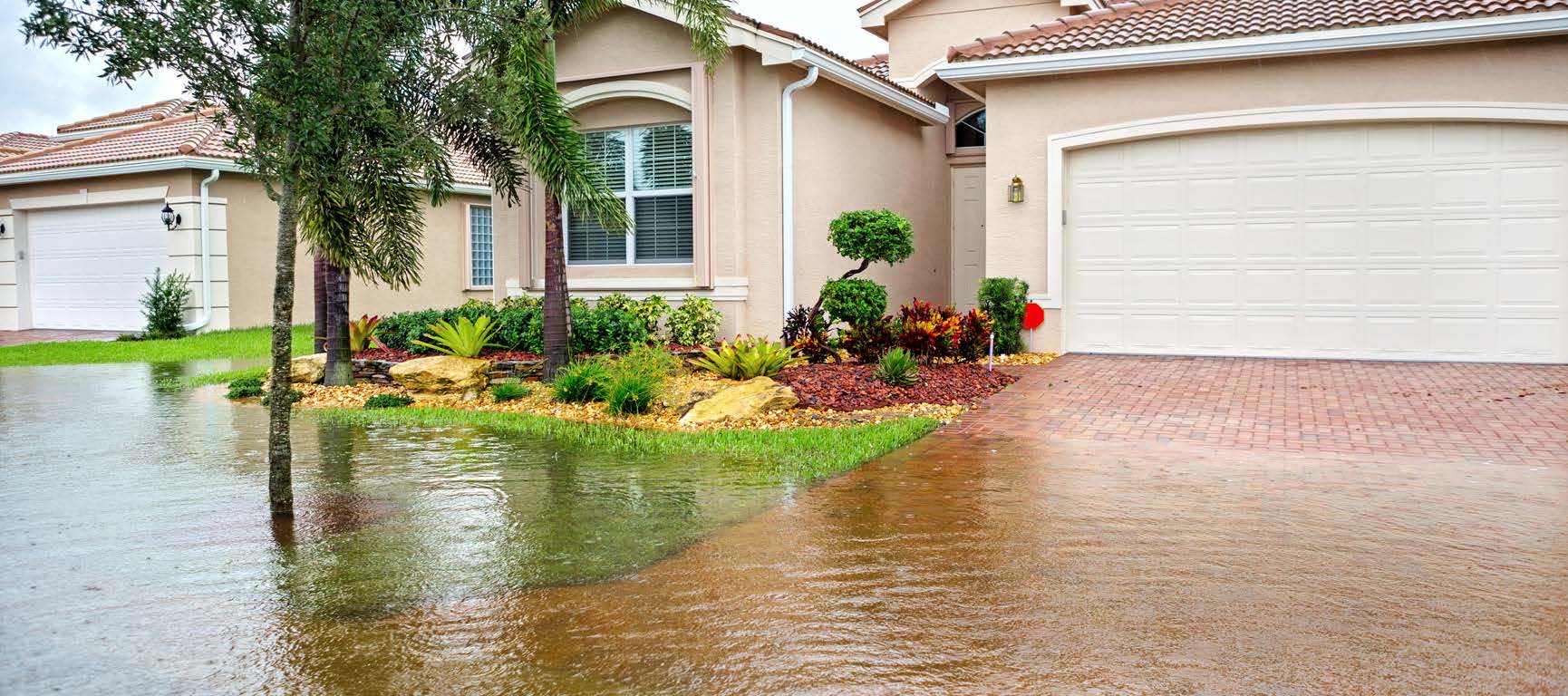Introduction
Flooding can cause extensive damage to a home and its contents, yet standard homeowners’ insurance policies do not cover flood-related losses. To protect your property, you may need to purchase a separate flood insurance policy, typically offered through the National Flood Insurance Program (NFIP) or select private insurers. Whether or not you live in a high-risk area, understanding how flood insurance works, who needs it, and what it covers is essential for safeguarding your financial well-being.
What is flood insurance?
Because standard homeowners insurance doesn’t cover damage from flooding, you will need to purchase a separate flood insurance policy to obtain coverage for your home and its contents. Fortunately, flood insurance is widely available from insurance companies that participate in the National Flood Insurance Program (NFIP), a partnership between the Federal Emergency Management Agency (FEMA) and the private insurance industry. A handful of insurance companies also offer excess flood insurance policies that can supplement NFIP coverage.
You are eligible to purchase national flood insurance if your community is one of the approximately 20,100 nationwide that participate in the NFIP. Participating communities must adopt certain floodplain management practices in exchange for the availability of flood insurance for their residents.
Do you need flood insurance?
You should consider purchasing flood insurance even if you don’t live in a high-risk area for floods. According to FEMA, approximately 25 percent of all flood insurance claims come from areas that are at low to moderate risk for floods. Even if you don’t live near the ocean, a river, or other body of water, factors such as storms, melting snow, inadequate or overloaded drains, or hurricanes can cause serious flooding.
How can you purchase flood insurance?
If you decide you want flood insurance, start by calling your homeowners insurance representative. Although NFIP policies are backed by the federal government, they are sold through private insurers. If your current insurer can’t offer you flood insurance, you can call the NFIP Telephone Response Center at (800) 621-3362. The response center can provide you with names of local agents or companies who can sell you flood insurance.
How much flood coverage can you obtain?
You can purchase coverage for your home through the NFIP up to the following amounts:
- $250,000 for the building
- $100,000 for the contents
If you own a home whose value exceeds the amount available through the federal program, you may want to look into purchasing excess flood insurance through a private insurer. Excess flood insurance covers amounts above the $250,000 federal limit, and unlike NFIP coverage, may cover your home for its full replacement cost. You may be able to purchase these policies even in high-risk flood zones. A few insurance companies have begun offering flood policies designed to replace NFIP coverage, but these policies are generally available only in low- to moderate-risk flood zones.
How much does flood insurance cost?
The cost of flood insurance depends on many factors, including the type of occupancy (e.g., single family, nonresidential), the amount of coverage, the deductibles you choose, and the location, design, and age of the building. Your insurance representative can give you a premium quote that accurately reflects your circumstances. You can also get a quick premium estimate at the National Flood Insurance Program’s consumer website, www.floodsmart.gov.
What else should you know about flood insurance?
Here are some other facts you should know about flood insurance. First, you can purchase an NFIP policy at any time if you live in a participating community. You can even purchase it immediately before or during a flood. There is one catch, however. A 30-day waiting period generally applies before the policy becomes effective. Second, you can purchase an NFIP policy even if you live in a high-risk region for floods. As long as your community participates in the NFIP, insurance companies will be able to offer you a policy. Third, NFIP policies don’t cover flooding from wind-driven rain or damage from hail. Your homeowners policy will likely cover these situations. Finally, NFIP policies offer some protection for flood-related basement damage but don’t cover all types of damage. They ordinarily covers items such as furnaces, water heaters, foundation elements, stairways, and oil or natural gas tanks, as well as appliances such as clothes washers, dryers, and freezers. They don’t cover basement structures such as finished walls, floors, ceilings, or personal belongings such as furniture or clothes.
Keep in mind that your homeowners policy doesn’t cover most types of basement flooding, either. Although flood insurance doesn’t cover every situation, it’s probably your best bet for dealing with basement flooding.
Conclusion
While flood insurance does not cover every possible type of water damage, it offers critical protection that standard homeowners policies do not provide. From minor basement flooding to catastrophic water damage, having the right coverage in place can provide financial security and peace of mind. Evaluating your risk, exploring available options, and understanding policy limitations will help you make an informed decision. If your community participates in the NFIP, you can take action today to better protect your home and belongings from the costly effects of flooding.
Scarlet Oak Financial Services can be reached at 800.871.1219 or contact us here. Click here to sign up for our weekly newsletter with the latest economic news.
Source:
Broadridge Investor Communication Solutions, Inc. prepared this material for use by Scarlet Oak Financial Services.
Broadridge Investor Communication Solutions, Inc. does not provide investment, tax, legal, or retirement advice or recommendations. The information presented here is not specific to any individual’s personal circumstances. To the extent that this material concerns tax matters, it is not intended or written to be used, and cannot be used, by a taxpayer for the purpose of avoiding penalties that may be imposed by law. Each taxpayer should seek independent advice from a tax professional based on individual circumstances. Scarlet Oak Financial Services provide these materials for general information and educational purposes based upon publicly available information from sources believed to be reliable — we cannot assure the accuracy or completeness of these materials. The information in these materials may change at any time and without notice.



